Lisbon's Timeless Treasures Unveiled
Join us for a captivating exploration of Lisbon's rich history and stunning architecture on this free walking tour, where every step reveals a new story.
Time
3 Hours
Stops
9 Places
Distance
3.6 km
Praça do Comércio
Known as one of Lisbon's most iconic squares, Praça do Comércio is a stunning example of 18th-century architecture, offering a grand introduction to the city's rich history.
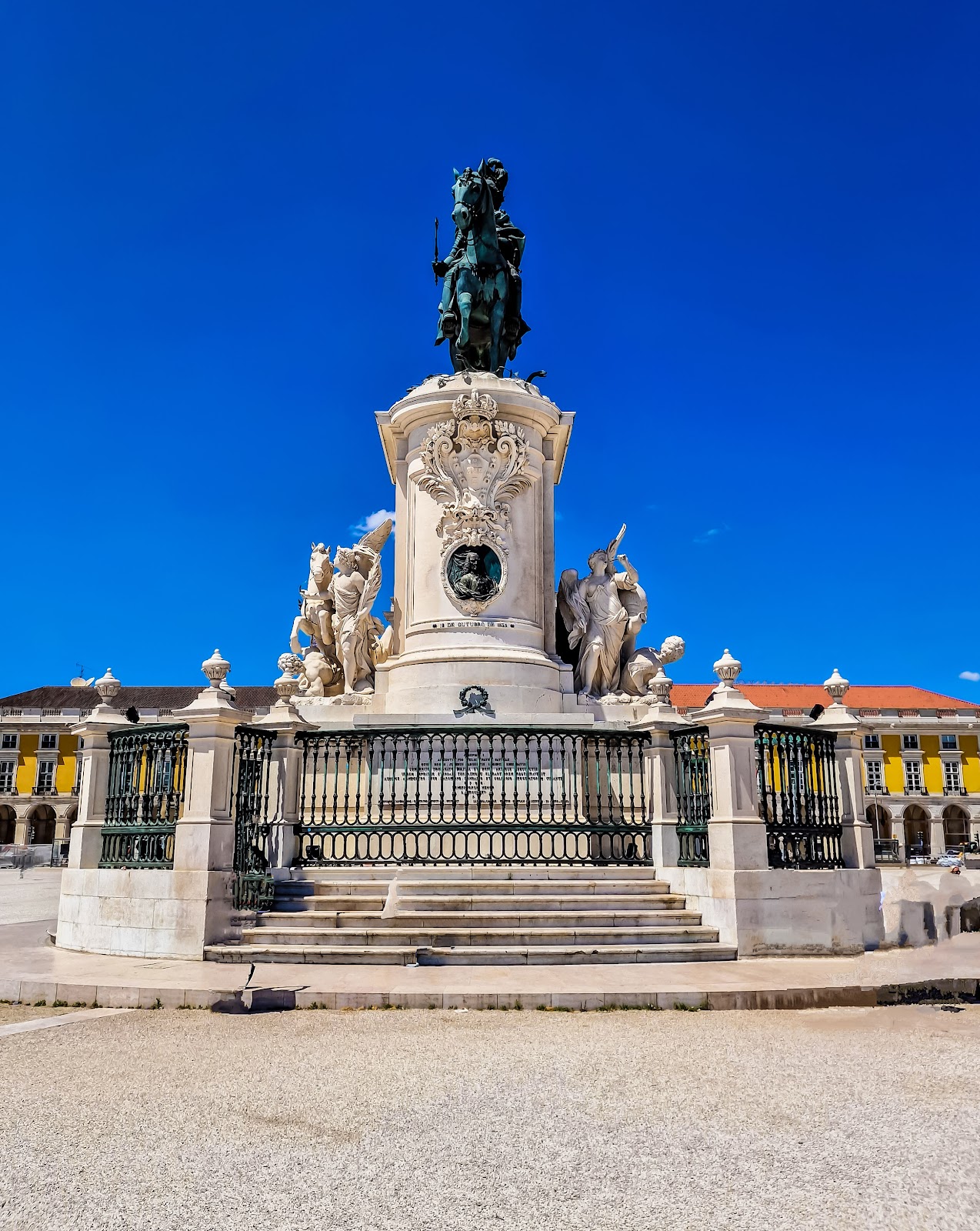
Praça do Comércio (Source: Google Maps)
Praça do Comércio, also known as Terreiro do Paço, is one of the largest squares in Europe and a symbol of Lisbon's maritime heritage. Originally the site of the Royal Palace, it was reconstructed after the 1755 earthquake and features the grand Arco da Rua Augusta, which leads to the bustling Rua Augusta. The square is framed by magnificent yellow Pombaline buildings, showcasing the neoclassical style that characterizes much of Lisbon's architecture. Its open space offers stunning views of the Tagus River and serves as a venue for public events and festivals, making it a vibrant heart of the city.
Rua Augusta Arch
Just a short walk from Praça do Comércio, the Rua Augusta Arch is an impressive triumphal arch that marks the entrance to Lisbon's main pedestrian street, offering panoramic views from the top.
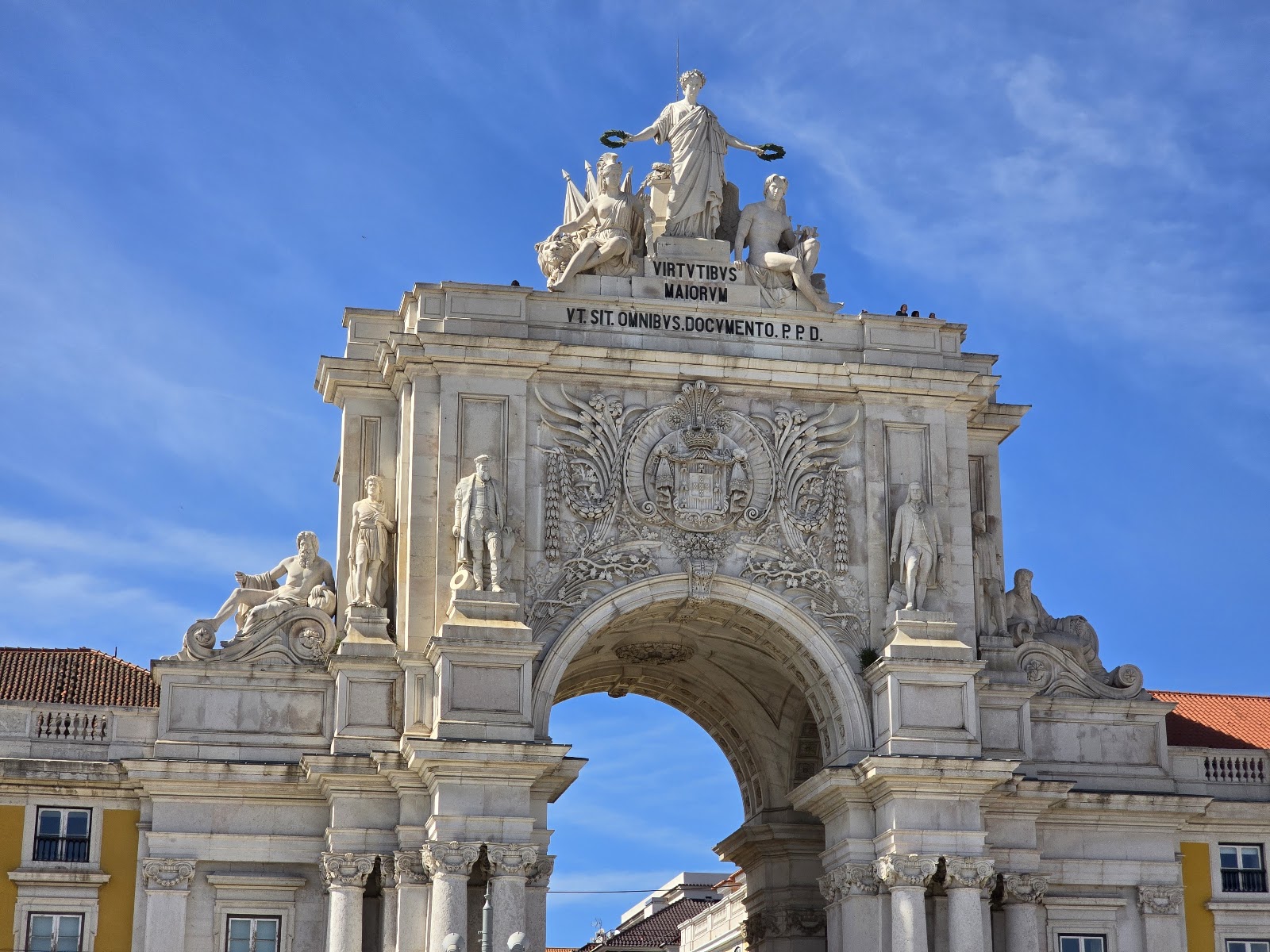
Rua Augusta Arch (Source: Google Maps)
The Rua Augusta Arch, or Arco da Rua Augusta, is an iconic triumphal arch that serves as a gateway to Lisbon's main pedestrian street. Completed in 1875, the arch was designed to commemorate the city's reconstruction after the 1755 earthquake. Its neoclassical architecture features intricate sculptures and reliefs that symbolize the city's resilience and maritime history. Visitors can ascend to the top for panoramic views of Praça do Comércio and the surrounding areas, providing a unique perspective on Lisbon's urban landscape. The arch is not only a functional structure but also a celebrated landmark that embodies the spirit of the city.
Santa Justa Lift
This neo-Gothic lift is both a unique piece of urban transport and an architectural marvel, providing a fascinating link between the Baixa and Bairro Alto districts.
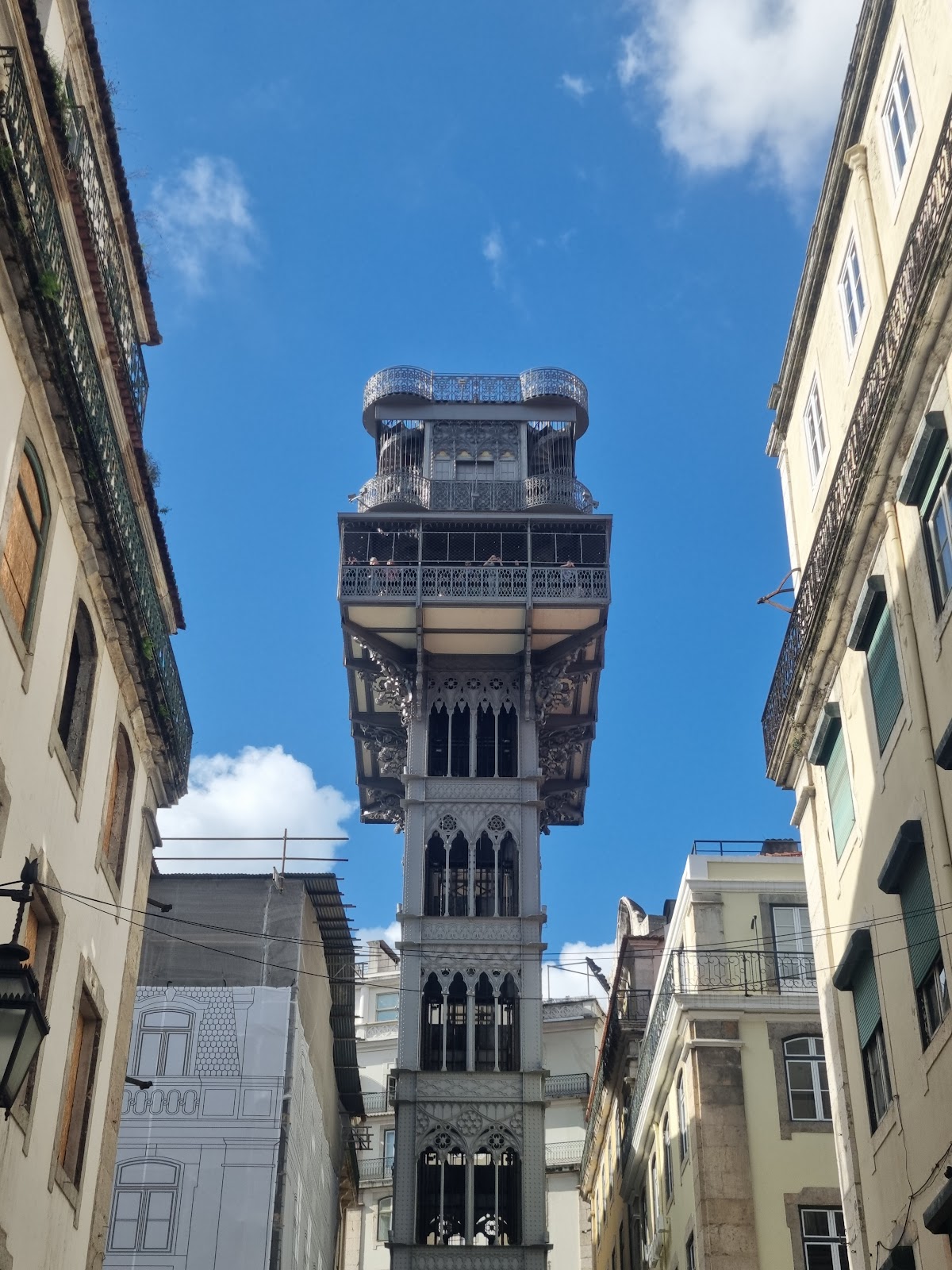
Santa Justa Lift (Source: Google Maps)
The Santa Justa Lift, or Elevador de Santa Justa, is a remarkable neo-Gothic structure that connects the lower streets of the Baixa district with the higher Bairro Alto. Designed by Raúl Mesnier de Ponsard, an apprentice of Gustave Eiffel, it was inaugurated in 1902. The lift stands 45 meters tall and features a wrought-iron design that is both functional and visually striking. It offers a unique experience as visitors ascend in a vintage-style cabin, enjoying views of the surrounding architecture. The lift not only serves as a means of transportation but also as a historical monument, representing the innovative spirit of early 20th-century engineering in Lisbon.
Carmo Convent
A short stroll from the Santa Justa Lift, the Carmo Convent is a beautiful Gothic ruin that stands as a poignant reminder of the 1755 earthquake.
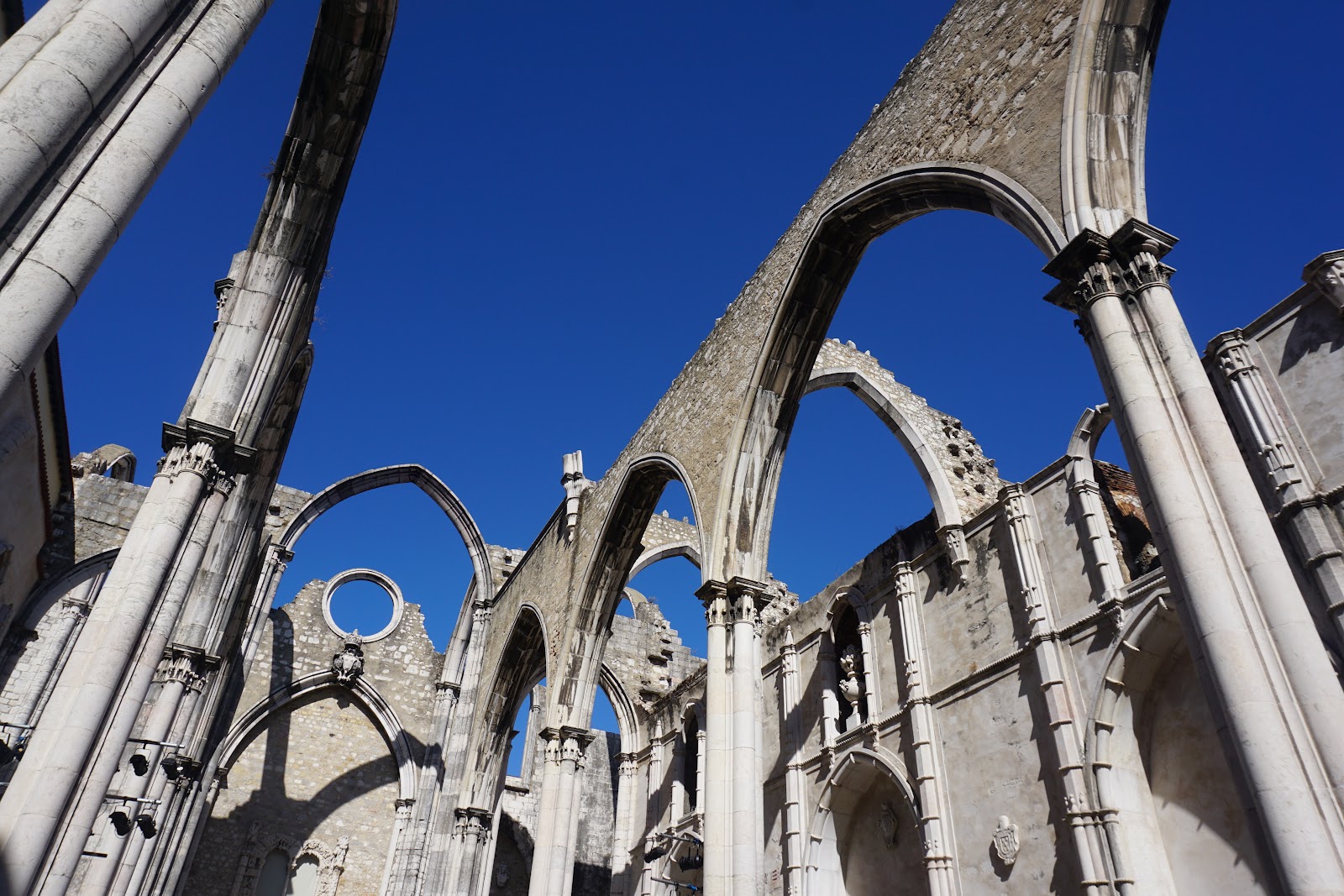
Carmo Convent (Source: Google Maps)
Carmo Convent, or Museu Arqueológico do Carmo, is a fascinating Gothic ruin located in the heart of Lisbon. Originally built in the 14th century, it was once a thriving monastery until it was partially destroyed by the devastating earthquake of 1755. The convent's roofless nave, with its soaring arches and intricate stonework, serves as a poignant reminder of the disaster that reshaped the city. Today, it houses an archaeological museum showcasing artifacts from various periods of Portuguese history. The site is a popular destination for visitors interested in Lisbon's rich past and architectural heritage.
Rossio Square
Known for its lively atmosphere, Rossio Square is a vibrant hub of activity, surrounded by traditional Portuguese calçada paving and historic buildings.
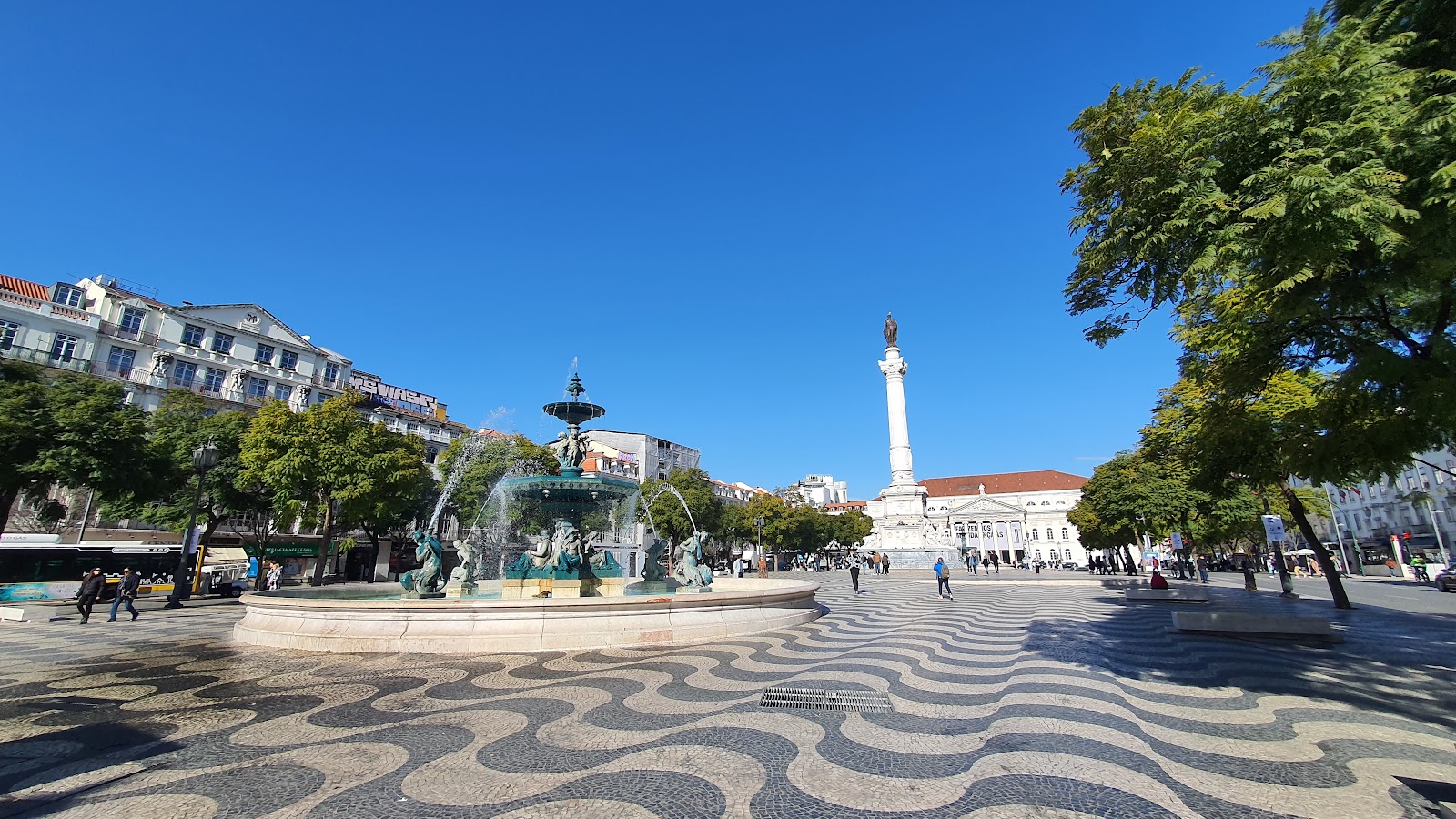
Rossio Square (Source: Google Maps)
Rossio Square, or Praça de D. Pedro IV, is one of Lisbon's most vibrant and lively public spaces. With its distinctive wave-patterned cobblestone paving, the square is surrounded by historic buildings, including the National Theatre and the Rossio Train Station. It has been a central gathering place for locals and tourists alike, hosting various events, markets, and celebrations throughout the year. The square features a statue of Dom Pedro IV, a symbol of Portuguese independence, and is an ideal spot to relax at one of the many cafes or simply people-watch. The lively atmosphere and cultural significance make Rossio a must-visit location.
São Domingos Church
Just a few minutes from Rossio Square, São Domingos Church is a testament to resilience, having survived fires and earthquakes, and is a place of deep historical significance.
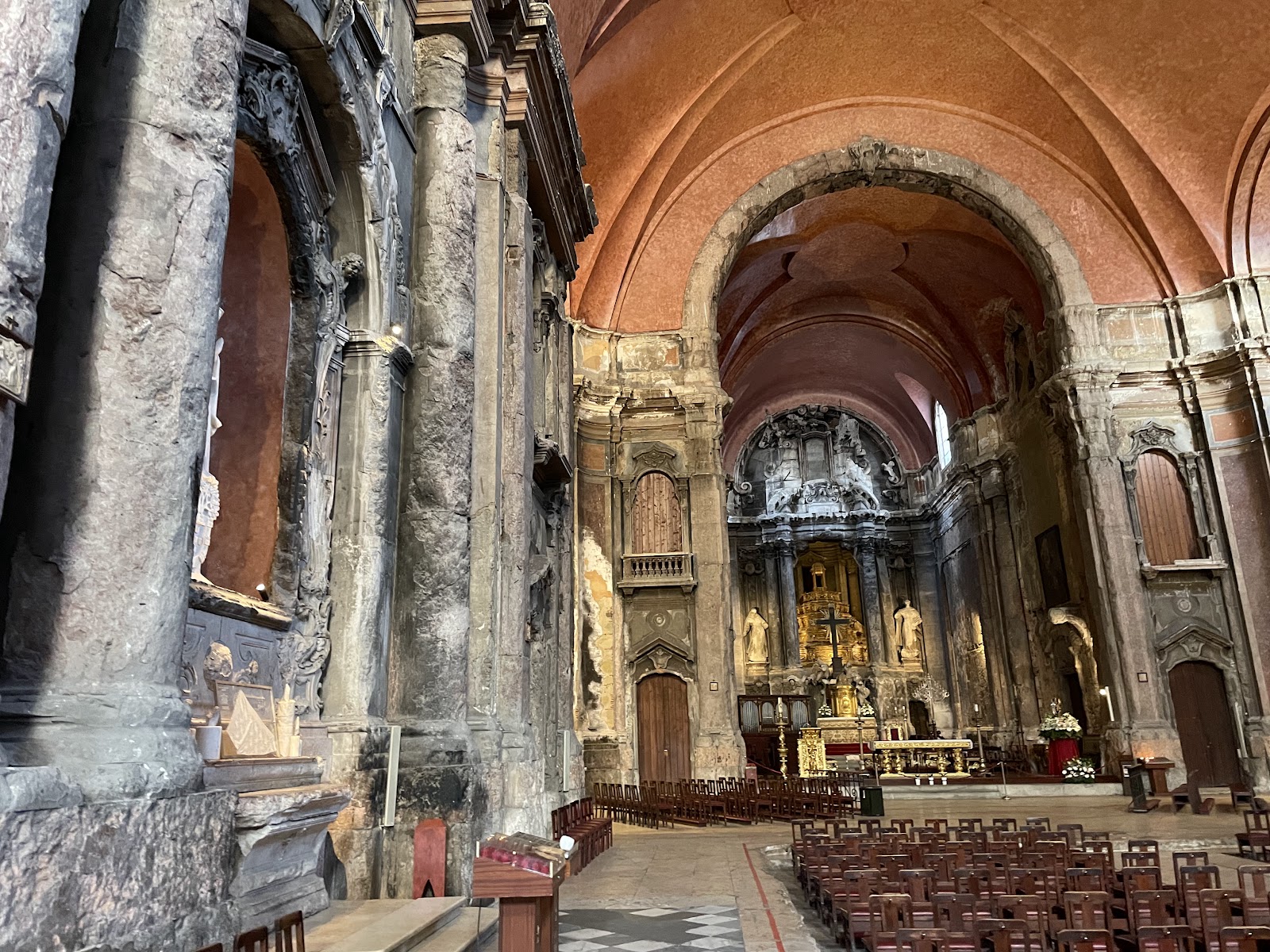
São Domingos Church (Source: Google Maps)
São Domingos Church, or Igreja de São Domingos, is a significant historical landmark in Lisbon, known for its dramatic history of resilience. Originally built in the 13th century, the church has survived multiple disasters, including the 1755 earthquake and devastating fires. Its interior, characterized by a stark yet beautiful Baroque style, features remnants of its turbulent past, including blackened walls and restored altars. The church serves as a place of worship and reflection, attracting visitors interested in its rich history and architectural beauty. It stands as a testament to the enduring spirit of the city and its people.
Avenida da Liberdade
A leisurely stroll along this grand boulevard, known for its elegant shops and lush green spaces, offers a glimpse into Lisbon's more modern and cosmopolitan side.
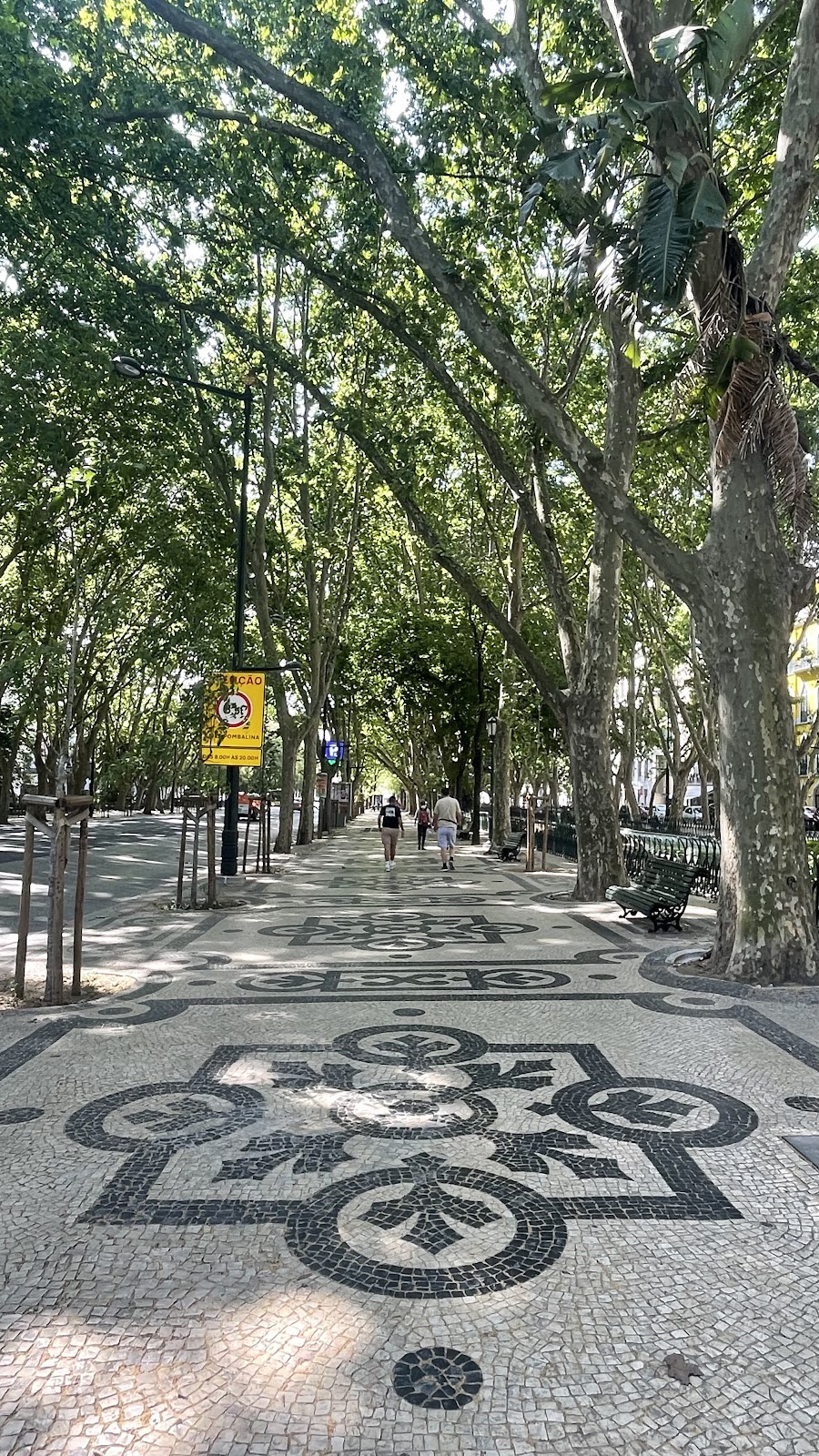
Avenida da Liberdade (Source: Google Maps)
Avenida da Liberdade is one of Lisbon's most prestigious boulevards, known for its wide avenues lined with luxurious shops, hotels, and theaters. Established in the late 19th century, the avenue was designed to resemble the grand boulevards of Paris, featuring elegant trees and beautiful plazas. It serves as a cultural and commercial hub, attracting both locals and tourists who seek to experience Lisbon's modern cosmopolitan vibe. The avenue is also home to several monuments and sculptures, reflecting Portugal's artistic heritage. Visitors can enjoy leisurely strolls, shopping, and dining in this vibrant area that showcases the city's contemporary lifestyle.
Eduardo VII Park
At the top of Avenida da Liberdade, Eduardo VII Park provides a tranquil escape with expansive views over the city, perfect for a moment of relaxation amidst nature.
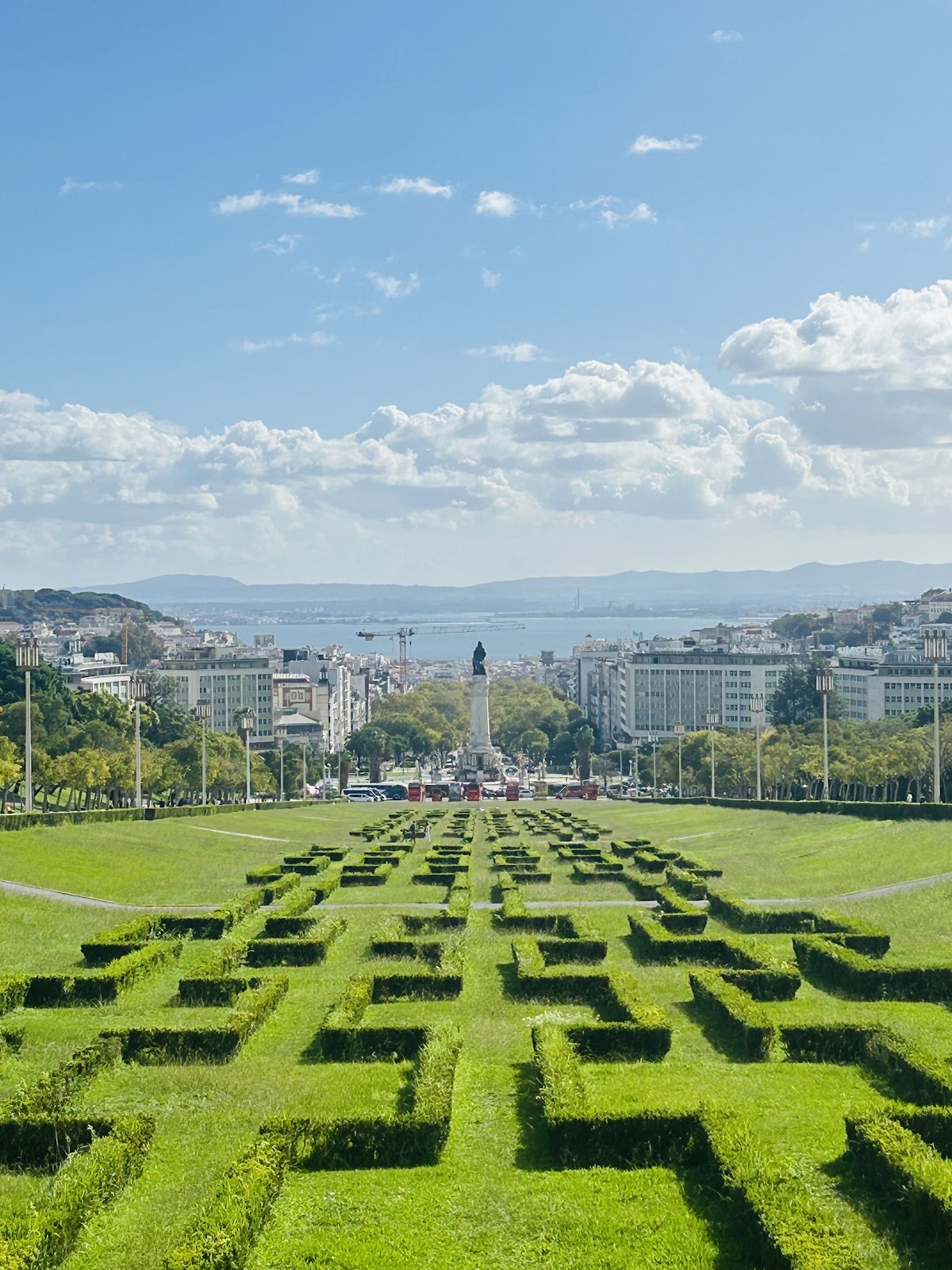
Eduardo VII Park (Source: Google Maps)
Eduardo VII Park, or Parque Eduardo VII, is the largest park in central Lisbon, offering a green oasis amidst the bustling city. Established in the early 20th century, the park features beautifully landscaped gardens, walking paths, and panoramic views of the city and the Tagus River. It is named after King Edward VII of England, who visited Portugal in 1902, and serves as a popular spot for both relaxation and recreation. The park is home to various sculptures, fountains, and the Estufa Fria, a stunning greenhouse filled with exotic plants. Visitors can enjoy picnics, leisurely walks, or simply take in the serene atmosphere of this urban retreat.
Estufa Fria
Located within Eduardo VII Park, Estufa Fria is a lush greenhouse showcasing exotic plants, offering a serene and refreshing end to the walking tour.
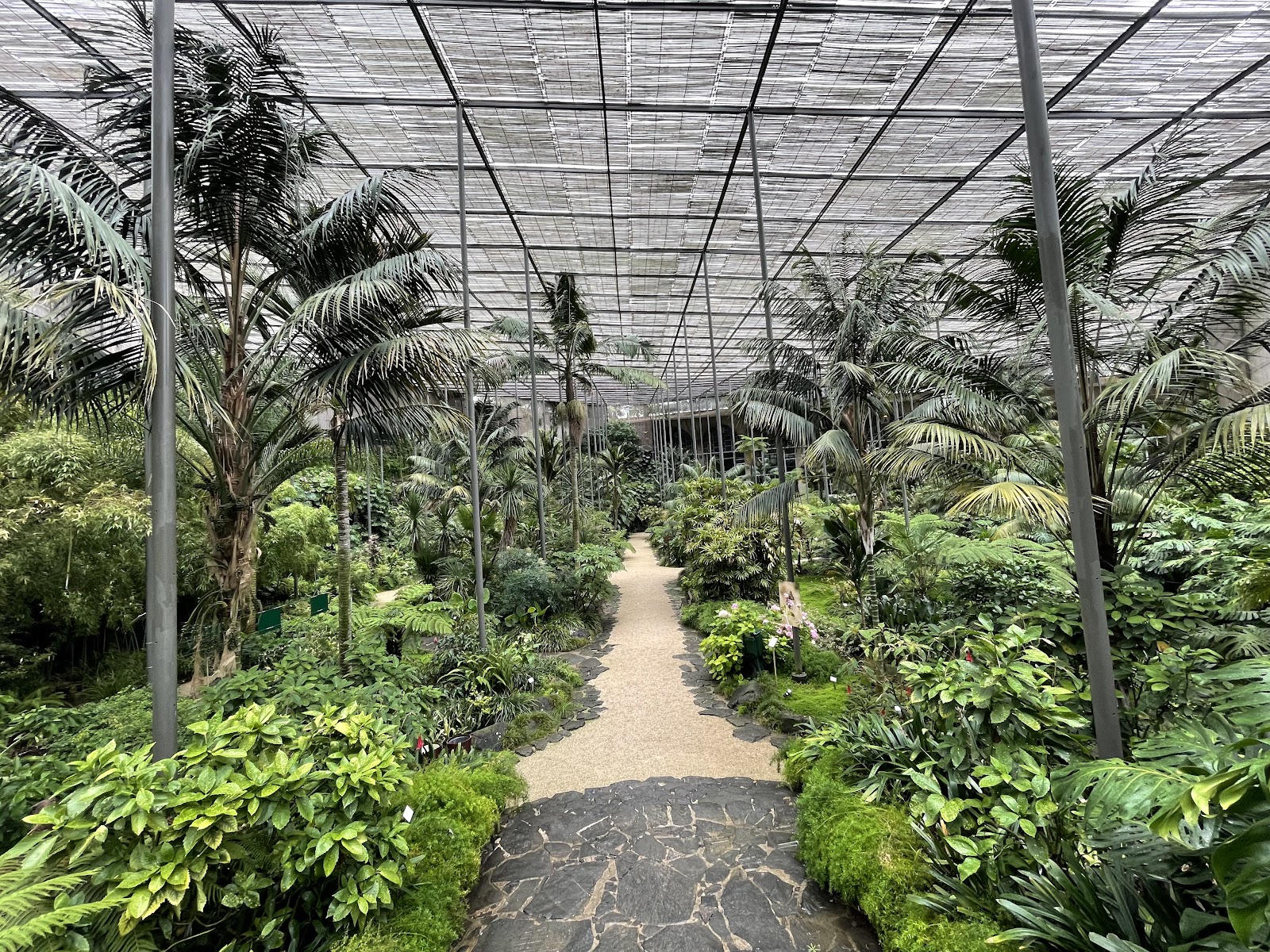
Estufa Fria (Source: Google Maps)
Estufa Fria, or the Cold Greenhouse, is a hidden gem located within Eduardo VII Park. Designed in the early 20th century, this lush greenhouse features a diverse collection of tropical and subtropical plants, creating a serene environment for visitors. The Estufa Fria is divided into several sections, each showcasing different ecosystems, including a rainforest area and a succulent garden. Its unique architecture, with glass and iron structures, allows natural light to filter through, enhancing the beauty of the plants. This tranquil space provides a refreshing end to the walking tour, inviting visitors to relax and appreciate the wonders of nature in the heart of Lisbon.

Your travels, your rules.
Create your own Free Walking Tours.
Set your preferences, distances and anything you want to do or see.
Completely free, no payment required.